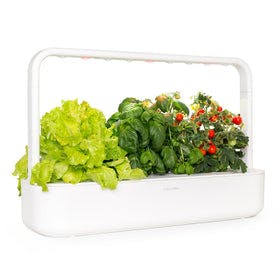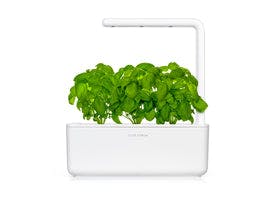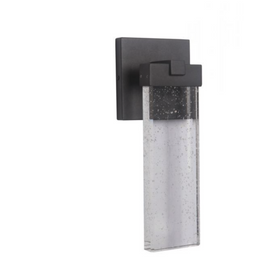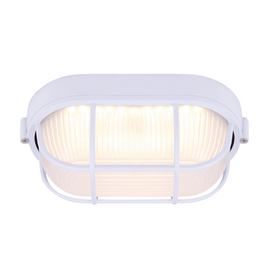
The Top Five Features for Designing Your Property Using Permaculture
Last Updated: Apr 13, 2025In the last article in this series, we looked at the benefits of having your property designed by a permaculture expert.
Today, we are looking at some of the technical frameworks that go into the designer’s report. While every design is unique, we’ll focus on the top five design features as they pertain to permaculture.
Table of Contents
- Topography
- Hydrology
- Lighting
- Hardiness zone
- Bioregional Analysis

Topography
First, the permaculture designer examines the property as a whole, which includes its topographical features. These can be as subtle as a slow decline over 100 feet of length, or as drastic as the rocky face of a cliff. Even though a home may look identical to the one next door, the land could be telling a different story.
The land is essential to the designer because it gives hints as to how specific weather changes will affect the property as a whole. If your house is at the top of a hill and the dry brush is below it, a spark and gust could quickly ignite the hillside. And sometimes homes will remain untouched, only to be taken out by the mudslide generated by a lack of vegetation and heavy rain.
What is the importance of elevation on your property? By knowing the topography, the designer will be able to place features around the elevation of your site. For example, directing rainwater from the roof to a barrel lower than your gutter and higher than your garden will make gravity do the hard work of moving the water.
Understanding the topography also lays the foundation of the design, and other design features begin to fall into place.

Hydrology
Hydrology is going to be one of the most connected features of topography. Knowing the direction of your slope unlocks the knowledge of what path water will take. Hillside properties can pose a significant problem if water flows in a straight line downhill, causing erosion of the soil that plants need to grow in.
The permaculture designer will look at all the hydrological aspects of your property. If you’re on a hillside and water flows gradually down the slope, you can capture and soak it into the ground for your trees and perennial berry bushes. But what if you are part of a series of townhouses with shared driveways or parking? The permaculture designer can look into how you can take that excess stormwater and direct it into a series of gardens or flower beds.
Hydrology is crucial to design. With the proper roofing, gutters, and rain barrels (and water filtration systems), you can collect water from your home to quench your thirst or soak your gardens. Just 1-inch of rainfall over a 1,000 square-foot home equates to roughly 600 gallons of water. In areas affected by drought, this could make a difference in your water bill during those relentless summer months.

Lighting
How your home accesses light is also a crucial aspect of permaculture design. The aspect, or slope direction of the property, can affect that access. Are you on a slope facing the sun, or are you facing away? Does your house have windows in locations where they will receive direct sun in the winter but indirect light in the summer months?
The designer will be able to look at the property and see locations to place various features, from solar panels to vegetable gardens. Maybe you’re planning a food forest and wondering how best to take advantage of the sunlight. The designer can help guide you through what plants will be able to fill the sunny space during the growth of the trees and then what will fill the space later as a shade-tolerant perennial.
Sometimes too much sun can be a downside, warming your western rooms or making a section of the patio unbearable for most of the afternoon. Your designer may recommend trellis plants that can turn that extra sunshine into a snack right outside your window and block the hot summer sun.

Hardiness zone
The plant hardiness zone refers to the range of climate conditions in which a plant can thrive. You can calculate it from the average annual minimum temperature of your area. But even these are projected to be changing as a result of the climate crisis. With warmer temperatures moving northward, that means that by 2050, your home could be in a slightly more temperate climate. And while you may not see drastic temperature shifts over the next 20 years, it could affect what varieties of plants you will be able to grow.
Your permaculture designer will have a plan for that and will select plants that can survive the long-term transition. They can guide you through the locations for different varieties of fruit, nut, and supporting tree species that meet your unique region. They can also recommend different vegetable plant varieties, both annual and perennial, making the most of every space.
With each hardiness zone also comes unique seasonal risks. Is your zone prone to blizzards? The permaculture designer can look at your property and give ways to mitigate the harsh, chilling winds. Maybe you’re in a zone 9 where wildfires are becoming more prominent. Depending on the site, the designer can recommend ponds, fire-resistant plants, and some common ways to improve your property’s preparedness.
Bioregional Analysis
The bioregional analysis is an investigation into factors that affect your site. They can range from socioeconomic to environmental. The permaculture designer you select will likely be living within your bioregion and have plenty of experience dealing with the factors affecting your site.
What’s your native forest? Today, we have lawns around our houses and fields between our towns for food, but 300 hundred years ago, North America looked very different. Perhaps your region is meant to be a grassland instead of a forest. These differences could ultimately change what you grow and how you grow it.
With a knowledge of the local food chain, the designer can help plant various beneficial species around your property, which helps increase the natural habitat for native wildlife. Increasing habitat for insects and animals is important for a site, as it creates diversity, and diversity creates stability.
One thing many people may not think about is their watershed and what is happening in it. A well-known trait about water is that anything in it will flow downstream. As such, it’s essential to know about your placement in a watershed; such as, where it originates, and what will come up against it before it gets to you.
A combination of conditions upstream aided by nutrient runoff, warmth, and sunlight could produce ideal conditions for toxic blue-green algal blooms. Or maybe you live in a coastal region where saltwater intrusion into freshwater aquifers is a current or projected problem. Understanding your placement in the system will prepare you in the event of a local issue.
Now, every designer is going to be different, and that is what makes their work unique. One designer may focus on planting trees at a mature size, while another may place them closer together so you can thin them out as time goes on. Ultimately, the best way to guarantee you’re getting what you want is to talk with your designer about your concerns and see what they recommend.
Stay tuned for the next permaculture article, where we will take a closer look at designing the site.
Tanner Sagouspe
Tanner Sagouspe has a Masters in Environmental Management and is a Permaculture Designer who promotes tackling the climate crisis at home.










